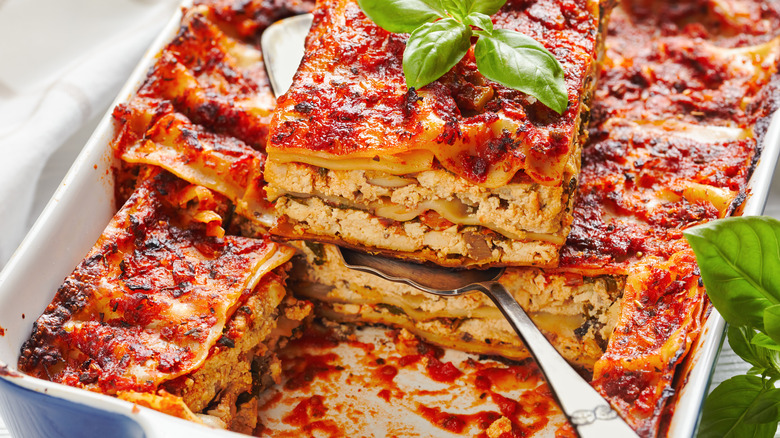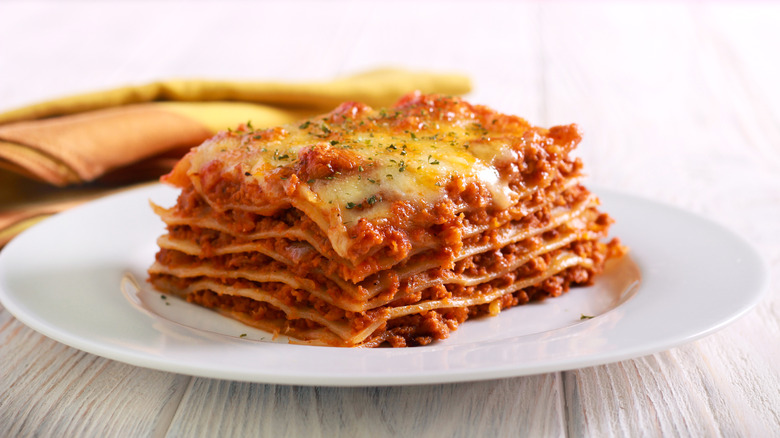The Perks Of Using Fresh Lasagna Sheets Over Boxed Ones
Before there was Giada De Laurentiis, there was Marcella Hazan, who Lidia Bastianich called "the first mother of Italian cooking in America," per The New York Times. Unlike some chefs who might have sought to turn cooking into performance art, she was all about keeping things simple, to the point where her husband once said she would get "distressed" when she stumbled onto a complicated recipe.
So, to read that Hazan was an advocate for making lasagna from scratch might raise questions in the minds of some readers. Surely, with the plethora of boxed pasta noodles, bottled tomato sauces, and even powdered Béchamel sauce in the market, there would be no reason to even consider making lasagna from scratch, because to do so any other way could legitimately be considered "complicated."
But in her groundbreaking book, "Essentials of Classic Italian Cooking," Hazan dismisses the notion that lasagna can be made in any other way but from scratch, because to her, lasagna is a classic pasta dish made with "delicate layers of nearly weightless pasta" separated by layers of filling. And she posits that in order to get layers thin enough to do the dish justice means to make the pasta at home because the only way you can find pasta sheets thin enough to do the lasagna justice is to do it at home yourself, or with a pasta machine.
Homemade lasagna sheets give the dish a different texture
Many chefs that follow in Hazan's footsteps agree. Jamie Oliver debunks the idea that making pasta from scratch can eat up loads of time and effort, saying that he finds it's not really the case, and doing so will leave you with "soft sheets of pasta." Massachusetts chef Danielle Glanz also supports Hazan's assertion, telling Food & Wine that making lasagne noodles by hand leaves you with lasagna with a texture she compares to silk, and she calls the dish "something special to share with the people you care about most."
Texture aside, another good reason to use homemade lasagna sheets is that they cook more quickly, which means whatever time you might have spent making the pasta will have been saved by cutting down on its cooking time, per My Foodbook. But if you are truly pressed for time and want to save the experience of handmade pasta for another day, The Washington Post suggests using fresh egg pasta, which can be found in a grocery's refrigerator. It also says good quality dried sheets might also be acceptable, just parboil them first, and make your lasagna with fewer layers.
And if the task of making a lasagna where every component — from noodle to bechamel — seems daunting, Glantz recommends starting a few days ahead with the ragu, then moving on to the bechamel before making the pasta the day it is served.

